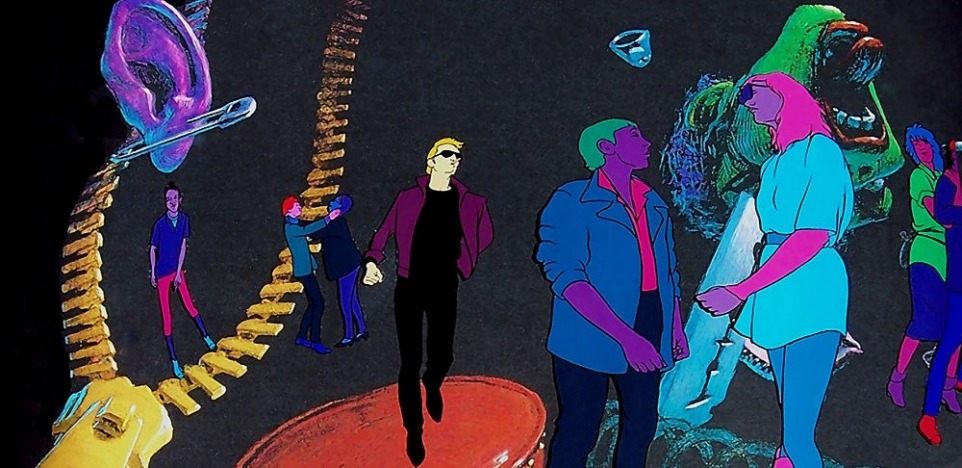"Dreaming, not freedom and equality, was the first inalienable right of the settlers. From the outset, the nation's credo was 'I dream, therefore I am.'"
— John Lahr
America, the land of possibilities, the realm of eternal desire. This is the theme of Ralph Baskshi's ambitious, innovative, and provocative new film, which is billed as "the state of the art of living animation." Using a mix of cartoons, paintings, photographs, documentary footage, newsreels, movies, and laser imagery, the director has created a phantasmagorical portrait of American culture from 1900 - 1980.
The story by Ronni Kern revolves around four generations of a Russian Jewish immigrant family. It is set against a backdrop of turn-of-the-century ghetto life in New York City, the heyday of vaudeville, World War I, the Great Depression, the 1930s gangland battles, World War II, the Beatnik and suburban culture of the 50s, the counterculture of the 60s, and the jaded vision of New Wave youth in the 70s.
Each of the four main characters in American Pop has a yen for music. Zalmie's father is killed in a pogrom in Russia; shortly after he and his mother arrive in the United States, she dies in a sweatshop blaze. The boy comes of age doing odd jobs in burlesque houses. A World War I wound ends Zalmie's dream of becoming a singer.
His son Benny turns out to be a talented piano player. When the boy shows no initiative, Zalmie arranges a marriage of convenience for him. Benny dies overseas during World War II.
His son Tony grows up during the 50s on Long Island. Although he has plenty of material possessions, the lad succumbs to the Beatnik philosophy and hits the open road. Tony meets the girl of his dreams in Kansas but leaves her behind for what may lie ahead in California. There he finds a niche writing songs for a rock group fronted by a self-destructive woman singer.
While on tour in Kansas, she o.d.'s and Tony — a user himself — plunges into despair. Little Pete, his illegitimate son by the girl of his dreams, shows up and the two of them return alone to New York City. They live on the streets and barely get by. Tony resorts to peddling drugs. Eventually left to fend for himself, Pete becomes a cocaine supplier for New Wave rock groups. After performing one of his songs for a band, Pete achieves success as a punk superstar. He fulfills the dream of making it, which beat in the blood and consciousness of Zalmie, Benny, and Tony. But when he reaches the top, Pete is a person without roots, family, or friends.
"If one could control the songs of a nation, one need not care who made its laws."
— John Dewey
Popular music has reflected and fueled the dream life of generations of Americans who have longed for happiness, wealth, success, and acclaim. This movie is propelled by over 50 musical selections — ragtime, the big band sound, jazz, folk, R&B, rock, and New Wave — all arranged and adapted by Lee Holdrige. The sounds and songs of Benny Goodman, Dave Brubeck, Peter, Paul, & Mary, Janis Joplin, Jimi Hendrix, Lou Reed, the Doors, Bob Seger, and others provide structure for the dreams of ambition and escape which beckon each generation. In this sense, the film celebrates the vitality and durability of American culture, especially pop music, which weathers all changes and continues to serve as a vehicle for our hopes and desires.
"We must stop talking about the American Dream and start listening to the dreams of Americans.
—Reuben Askew
A dark side to the American Dream also comes through in Bakshi's movie. There are scenes of gangland slayings, carnage in war, and the self-destructive results of drug use. Bakshi would agree with William James who once wrote: "The exclusive worship of the bitch-goddess of success is our national disease." Music alone cannot cure it. Those who really listen to the dreams of the people in American Pop will, hopefully, be challenged to create a better dream.
